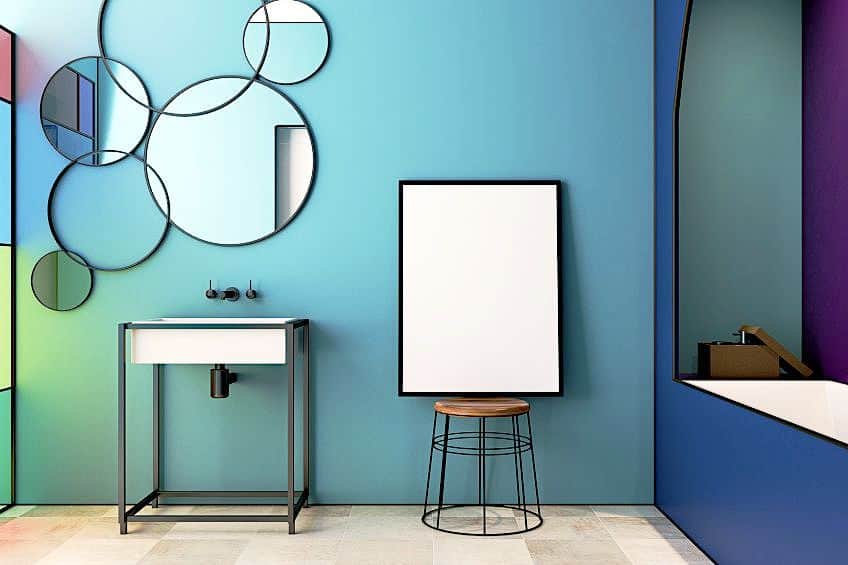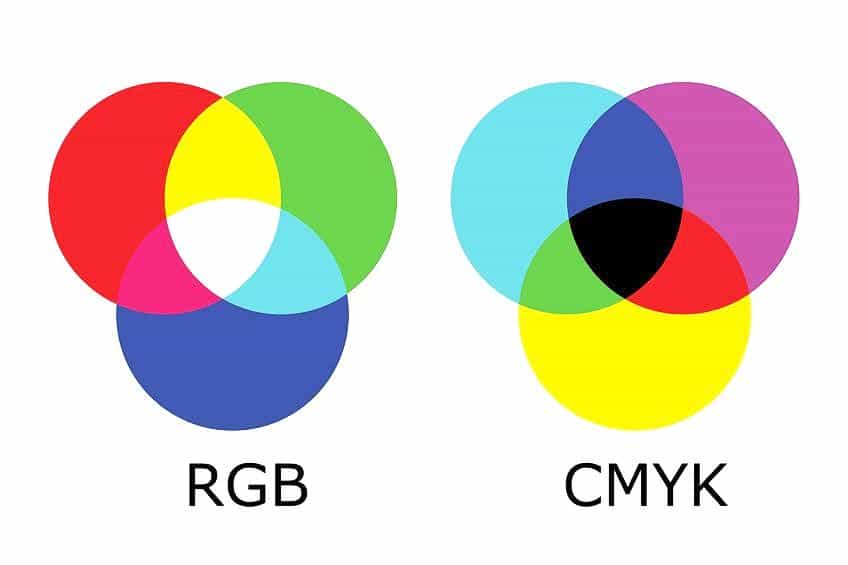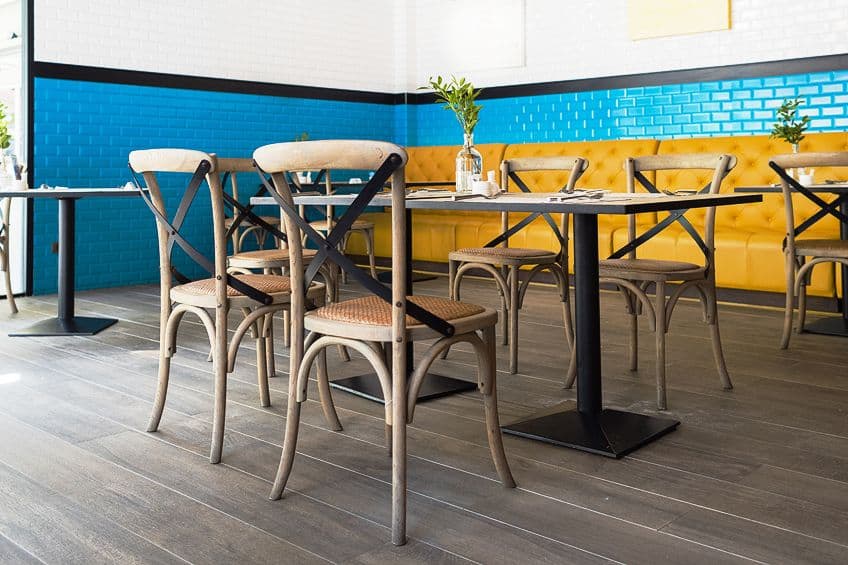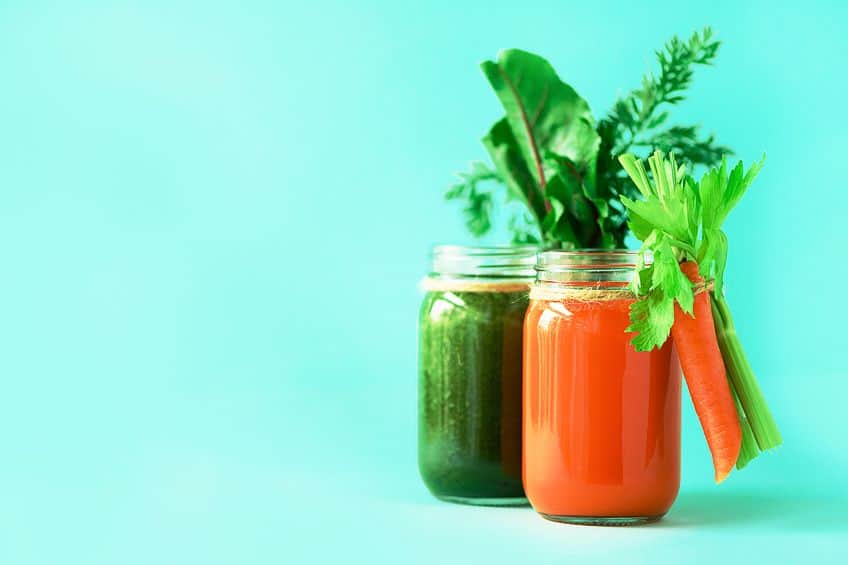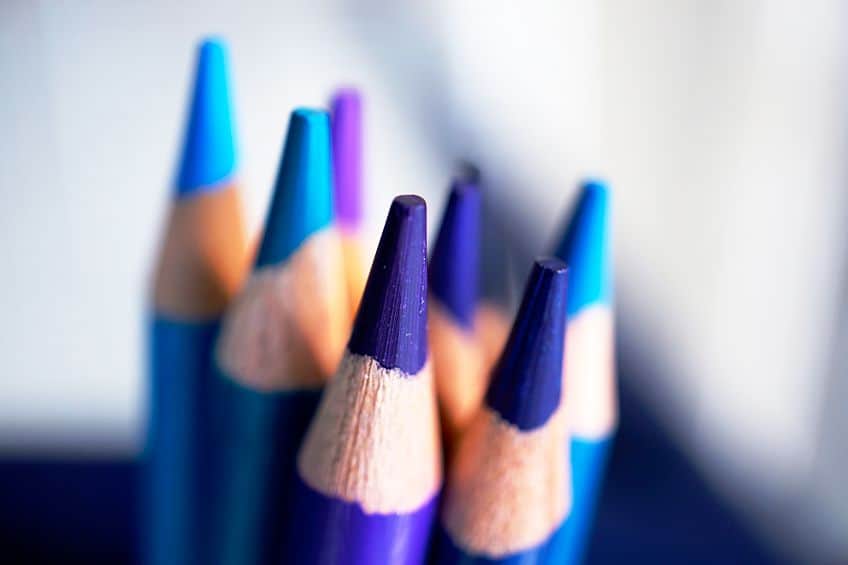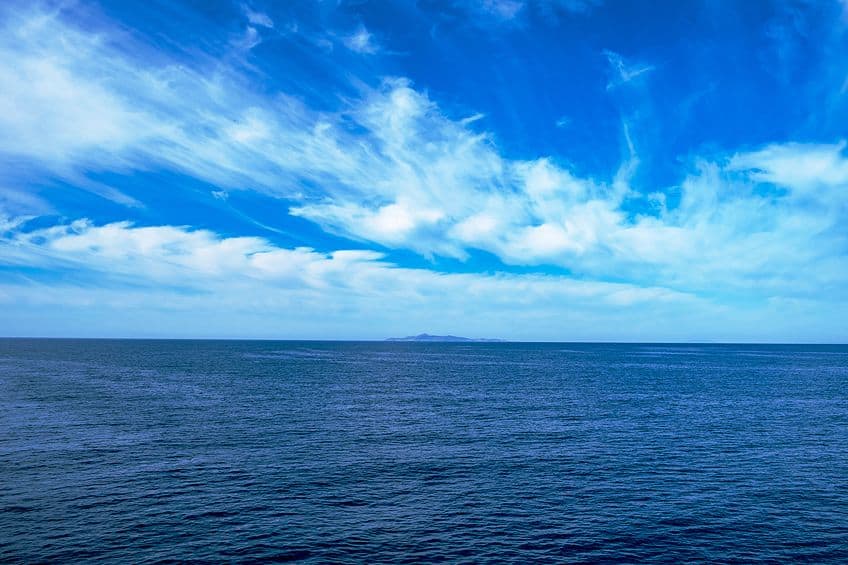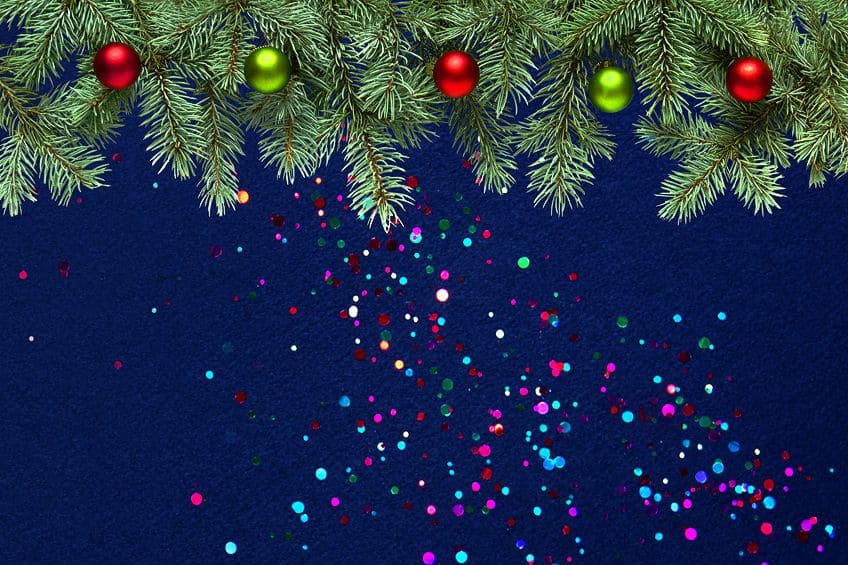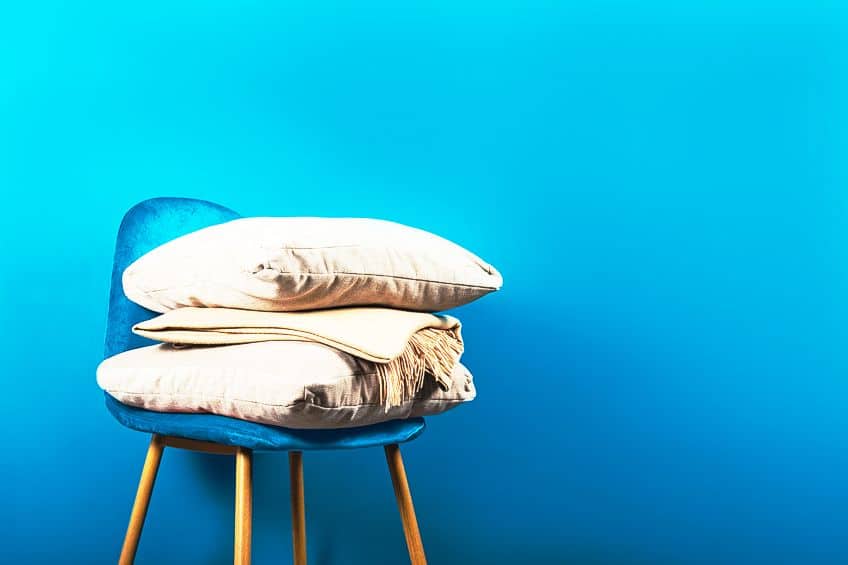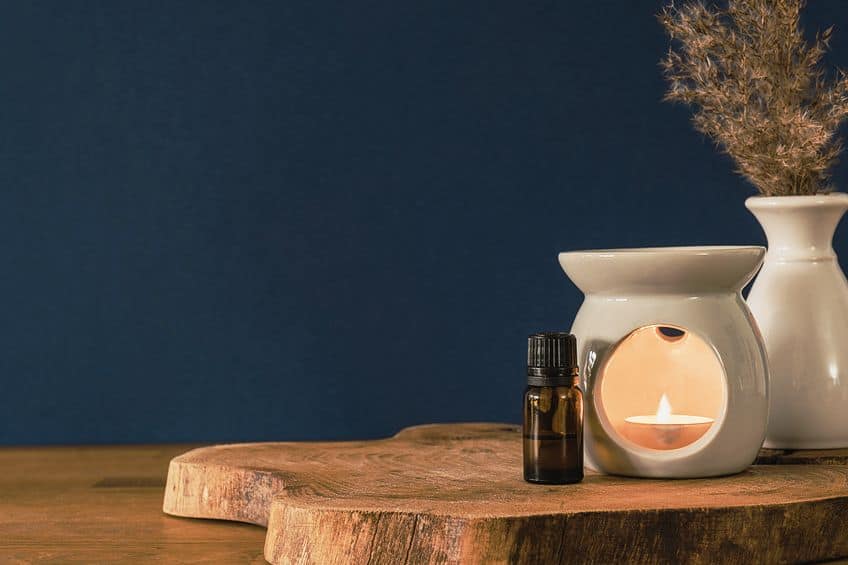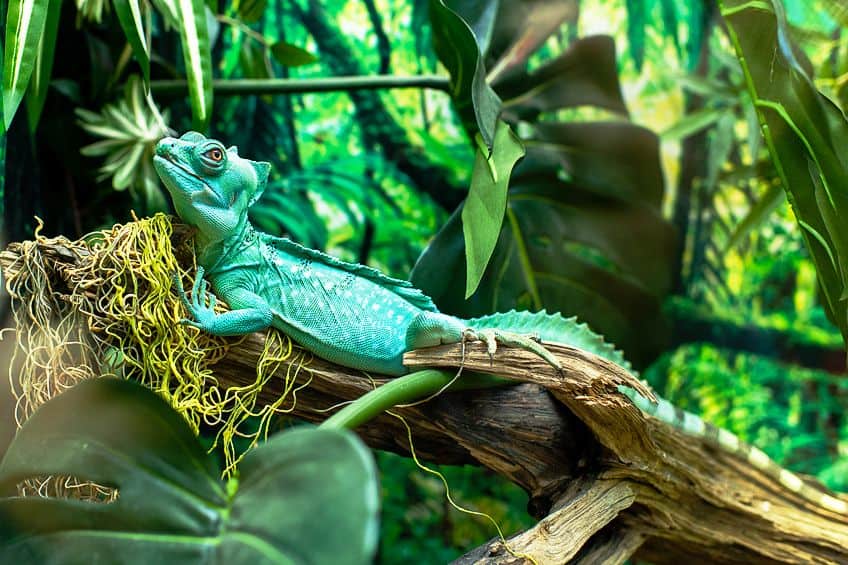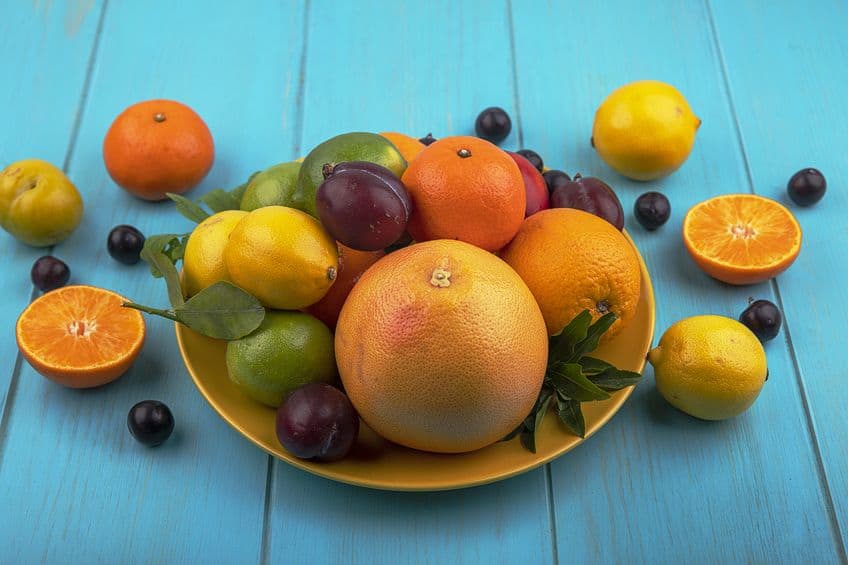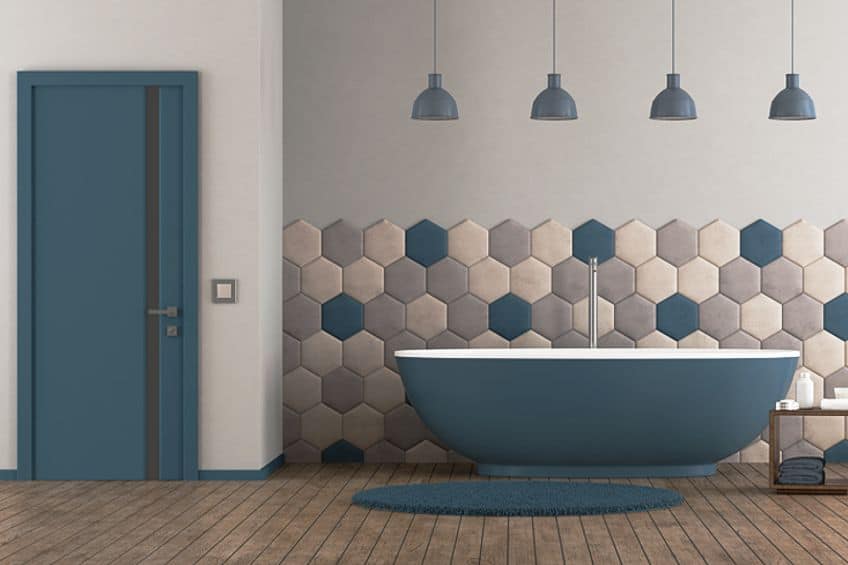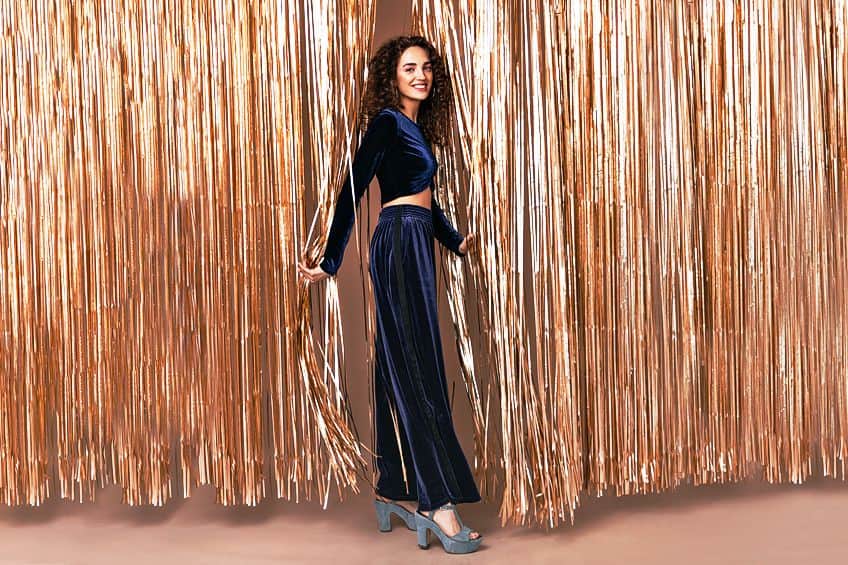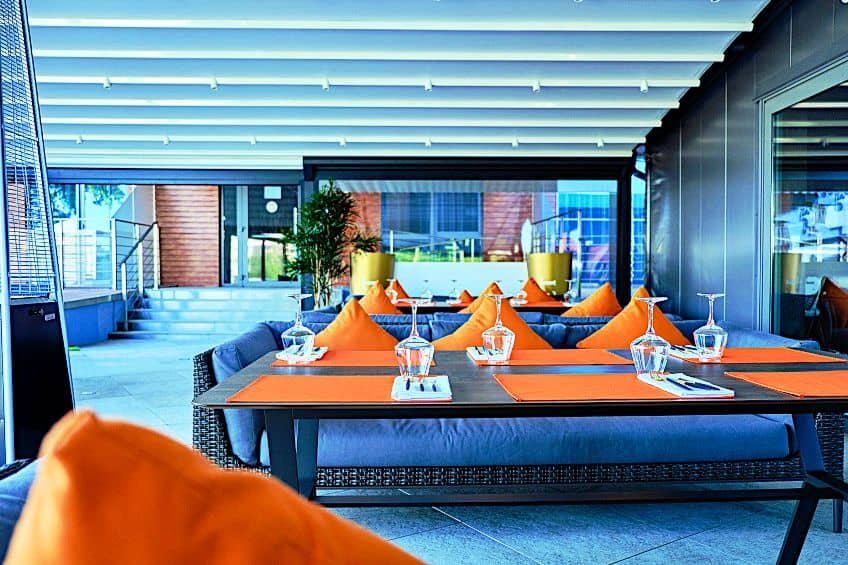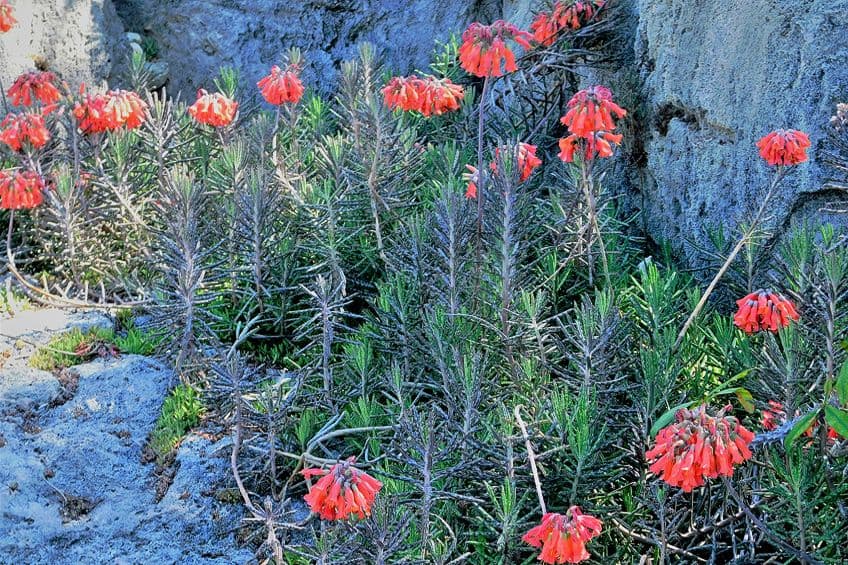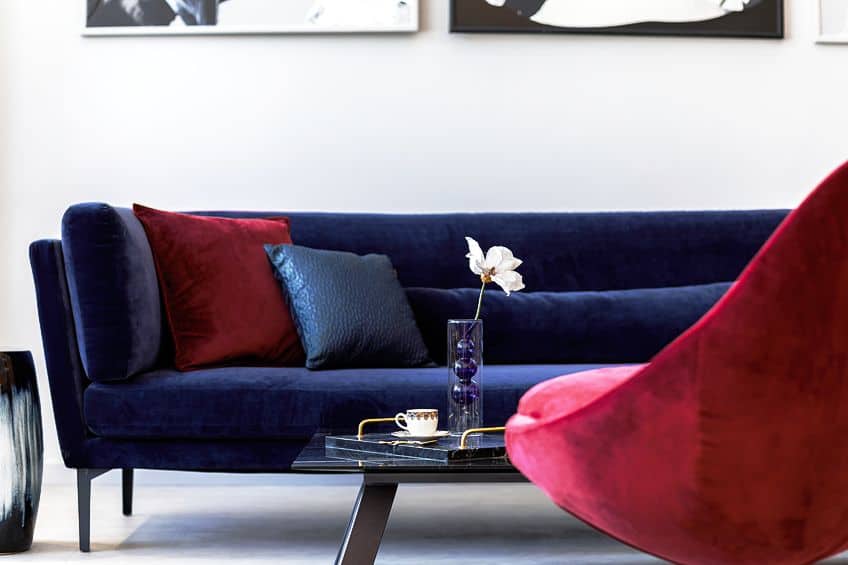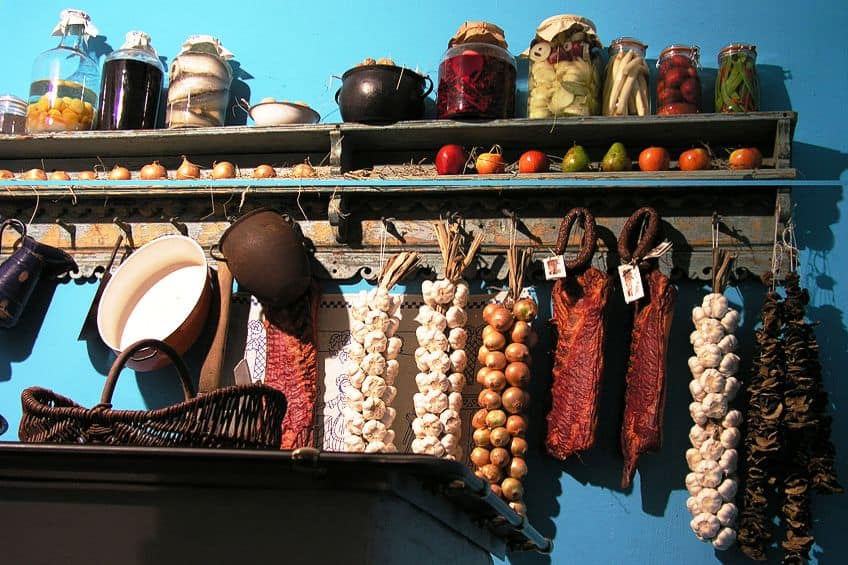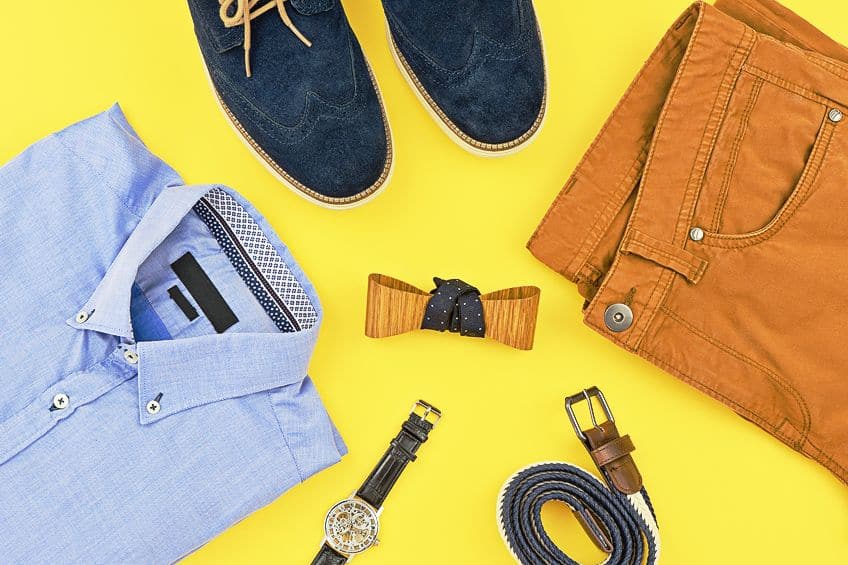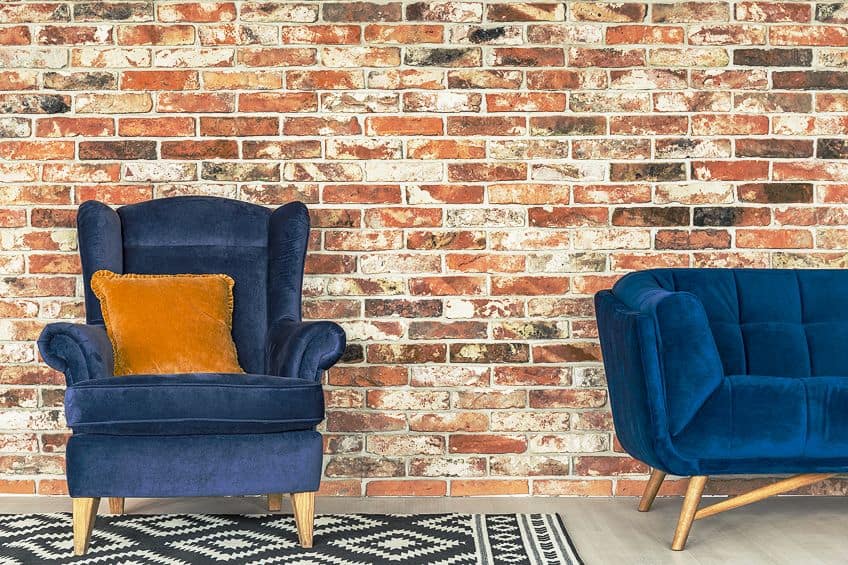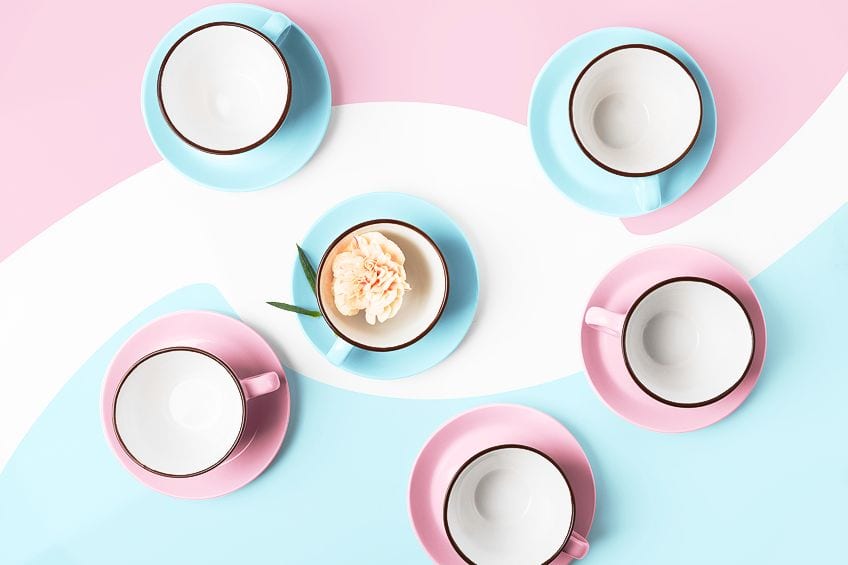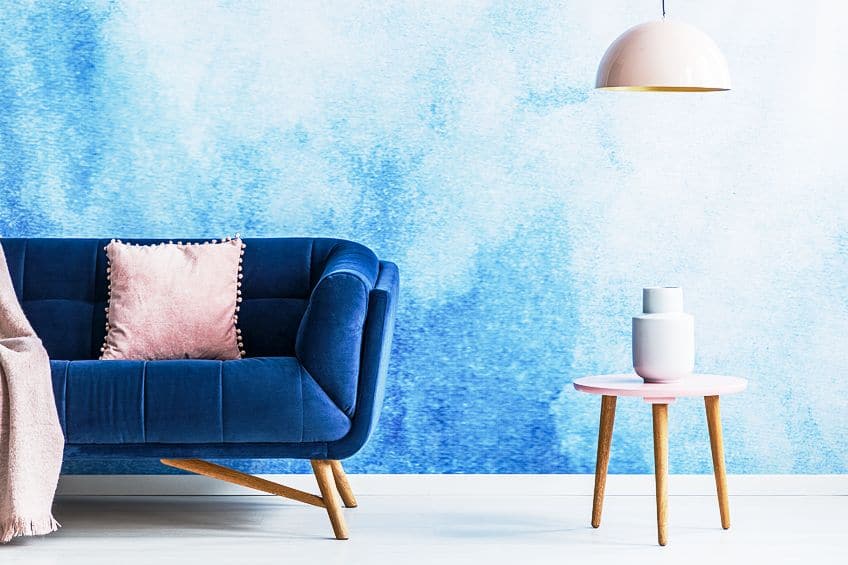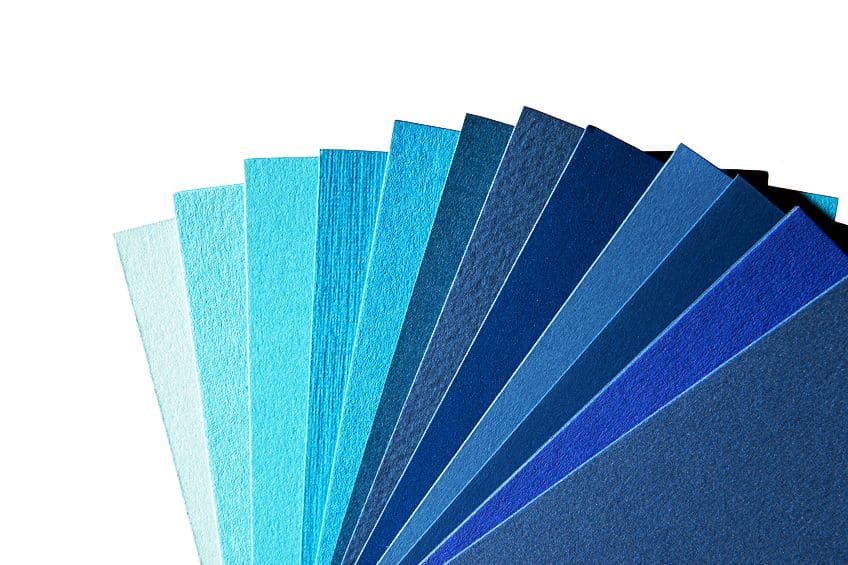What Colors Go With Blue? – The Most Popular Color to Use
Blue is one of the most well-liked colors around the world due to its link to nature. Even though colors have different meanings for people, blue is generally a calm hue that is often associated with relaxation. There are also many different types of blue that you can choose from, including darker and more elegant blues to softer and lighter relaxing blues. However, to set a specific mood or to send a certain message, it is important to determine what colors go with blue. This is quite easy to do, as blue is such a versatile color that it goes with practically any other hue. To make things easier, we have created a selection of the most popular colors that go with blue below!
What Colors Go With Blue?
Blue is considered a cool and calming color; however, many shades of blue can offer something different. Pale blues can be used as neutrals and offer an open and refreshing feel, while darker blues like navy can offer more of a sophisticated and cocooning effect. All blue colors are soothing and can help calm you, helping you to feel more centered. Since blue helps to relax you, it is also a great color that can help you lower blood pressure and can be a great color to use for meditation. To understand how to come up with the best color combination, you must look into color theory. Here you will discover how colors relate to one another on the color wheel. Just remember, there are different color models, which can alter the results a little.
We are going to be using the RGB (red, green, and blue) color model, which is used for things like your computer screen and incorporates the mixing of light colors. The traditional color model is used mostly for paints and paint pigments and is known as the RYB (red, yellow, blue) color model. As you can see, the colors mentioned in both models are primary colors, which are slightly different.
To make things even more confusing, there is also a CMYK (cyan, magenta, yellow) color model if you are wondering what those letters are in the table below. This is mainly used when printing. You will also notice a hex code; this is simply a devised code that helps you identify each hue. So, if you take #89cff0 and place this into a color search tool online, you should come up with all related information about baby blue. This is where the online tool can help you automatically show you all the color combinations available. To help explain the different color combinations, we are going to choose a standard pure blue. However, all blue colors will have similar combinations. Further below in this article, we will be looking at a few different blue color palettes that contain various shades of blue.
| Shade | Hex Code | CMYK Color Code (%) | RGB Color Code | Color |
| Blue | #0000ff | 100, 100, 0, 0 | 0, 0, 255 |
Colors That Complement Blue
Looking for contrast? Then, colors that complement blue are a perfect choice. These colors are easily found on the color wheel, simply find your specific blue color, and look at what color lies opposite it. In this case, the complementary color of blue is yellow. When creating an interior design, you can easily use yellow as one of the accent colors for blue, as the yellow will stand out nicely against the blue.
Of course, there are also numerous varieties of both blue and yellow, so you will need to find the ones that you prefer.
| Shade | Hex Code | CMYK Color Code (%) | RGB Color Code | Color |
| Blue | #0000ff | 100, 100, 0, 0 | 0, 0, 255 | |
| Yellow | #ffff00 | 0, 0, 100, 0 | 255, 255, 0 |
Split Complementary Colors That Go With Blue
If you are looking to use more than one complementary color of blue, then consider split complementary colors. These colors are also easy to find on the color wheel, as it is the two colors that can be found next to your primary complementary hue. So, it will be the two colors on each side of yellow.
| Shade | Hex Code | CMYK Color Code (%) | RGB Color Code | Color |
| Blue | #0000ff | 100, 100, 0, 0 | 0, 0, 255 | |
| Pure Green | #80ff00 | 50, 0, 100, 0 | 128, 255, 0 | |
| Pure Orange | #ff8000 | 0, 50, 100, 0 | 255, 128, 0 |
Analogous Colors That Go With Blue
This color combination has less contrast, and the colors work more harmoniously when paired. Colors that are positioned near to one another on the color wheel can be described as analogous. This means that they all share certain attributes, for example, if we take our cool blue, the analogous colors will also be cool hues.
The analogous colors are another shade of blue and a violet or purple.
| Shade | Hex Code | CMYK Color Code (%) | RGB Color Code | Color |
| Blue | #0000ff | 100, 100, 0, 0 | 0, 0, 255 | |
| Dodger Blue | #0080ff | 100, 50, 0, 0 | 0, 128, 255 | |
| Pure Violet | #8000ff | 50, 100, 0, 0 | 128, 0, 255 |
Monochromatic Colors That Go With Blue
Another color combination that offers less contrast, but still provides a sense of depth and layering when used in designs. One of the simpler color combinations, where you only need a single color. The pure blue color is our hue of choice, and from this, you choose the different variations. So, you have different tones and lighter as well as darker options to choose from.
| Shade | Hex Code | CMYK Color Code (%) | RGB Color Code | Color |
| Blue | #0000ff | 100, 100, 0, 0 | 0, 0, 255 | |
| Dark Blue | #000062 | 100, 100, 0, 62 | 0, 0, 98 | |
| Light Blue | #c4c4ff | 23, 23, 0, 0 | 196, 196, 255 |
Triadic Colors That Go With Blue
This three-color combination is again something that provides more contrast, which makes it a bit trickier to work with. So, rather use these hues as accent colors for blue, making your blue the main color, while the other colors are used less. There is also a pattern or form that you can observe on the color wheel. When drawing a line to each of the colors, it forms an even-sided triangle.
Pure green and pure red go with the blue to form a triadic color combination. Just remember, there are many other shades of each color, and you can still play around with things like saturation to create a color combination that works.
| Shade | Hex Code | CMYK Color Code (%) | RGB Color Code | Color |
| Blue | #0000ff | 100, 100, 0, 0 | 0, 0, 255 | |
| Pure Green | #00ff00 | 100, 0, 100, 0 | 0, 255, 0 | |
| Pure Red | #ff0000 | 0, 100, 100, 0 | 255, 0, 0 |
Creating Different Blue Color Palettes
Baby blue is only a single shade of blue, there are numerous other choices. The light color blues tend to pair better with pinks, yellows, grays, and soft orange hues, while the dark blues pair wonderfully with more vibrant colors like red, gold, and jewel tones like ruby red and emerald green. You can pair blue with other cooler colors like green and purple, which can help to create a calmer look. Of course, as with most colors, neutrals like white, gray, black, beige, and brown will always go well with blue. You can also pair blue with warmer colors, which can help a design stand out, and provide high contrast.
Bold colors like yellow, orange, and red, paired with blue, can make a bold statement.
Blue is quite an easy color to work with, and there are many possibilities open to you for creating a beautiful blue color palette. Experiment and enjoy discovering what colors go with blue. This is especially important when dealing with blue paint colors, as the examples we have provided below are only approximate colors. Different lighting situations can easily change the look of a paint color. Always get paint samples that you can test in each room before you decide on a particular color.
Blue and Beige
All types of blue can work with beige, which is considered a neutral color. Beige is a hue that can help to warm the cool tones of blue, offering a soft contrast that is less stark than white. Softer shades of blue paired with beige offer a naturally calm look that provides a certain beachy feel.
You can also include lighter natural woods to add to the feeling.
| Shade | Hex Code | CMYK Color Code (%) | RGB Color Code | Color |
| Water Blue | #0e87cc | 93, 34, 0, 20 | 14, 135, 204 | |
| Sandy Beige | #dcd5b9 | 0, 3, 16, 14 | 220, 213, 185 |
Darker blues like navy are also a perfect fit with beige, both are versatile and classic colors that provide a grounded and neutral feeling. The dark blue works well with most colors, and so does beige, so it is no wonder they make a perfect pair. Beige is commonly used as the main neutral color, while navy brings in color through blue décor and other accessories.
However, you can also consider painting the walls navy and using beige as your accent color. If this is too much, use the navy as an easy accent wall. This color combination is also quite popular in the fashion industry.
| Shade | Hex Code | CMYK Color Code (%) | RGB Color Code | Color |
| Navy Blue | #000080 | 100, 100, 0, 50 | 0, 0, 128 | |
| Beige | #ddc7a0 | 0, 10, 28, 13 | 221, 199, 160 |
Blue and White
The top classic color combination is blue and white, which will always be in style. The combination is fresh and clean and works perfectly in spaces like the bathroom. You can also create the perfect relaxing environment with blue and white, so it is great for bedrooms. Just as there are different types of blue, there are many shades of white. Below is an example of a cool baby blue paired with a cool white, with blueish-green undertones.
| Shade | Hex Code | CMYK Color Code (%) | RGB Color Code | Color |
| Baby Blue | #89cff0 | 43, 14, 0, 6 | 137, 207, 240 | |
| Catskill White | #f5fafa | 2, 0, 0, 2 | 245, 250, 250 |
You can also create a luxurious look in living areas. The combination can be used to create a coastal feel, or it can be used to create something more sophisticated. You can also bring other neutrals like beige to bring in a little warmth.
The below blue color palette offers a beach-type feel that includes shades of white, blue, and beige.
| Shade | Hex Code | CMYK Color Code (%) | RGB Color Code | Color |
| Blue Lagoon | #12646f | 84, 10, 0, 56 | 18, 100, 111 | |
| Verditer Blue | #55aabb | 55, 9, 0, 27 | 85, 170, 187 | |
| Beachside Villa | #c2b394 | 0, 8, 24, 24 | 194, 179, 148 | |
| Light Gray | #d4d4d4 | 0, 0, 0, 17 | 212, 212, 212 | |
| Alabaster | #fafafa | 0, 0, 0, 2 | 250, 250, 250 |
Blue and Green
Blue and green are analogous colors and are both cool colors. However, when paired, these colors still provide a contrast that is refreshing and bold. You can choose more vibrant shades like cerulean and apple green, or you can choose more muted or lighter tones of blue and green. Just remember to balance the colors you choose, and work to the 60,30,10 rule, where you have a main color that is used the most, while the other colors play an accent role.
You can also bring in other neutrals to create a more harmonious look.
| Shade | Hex Code | CMYK Color Code (%) | RGB Color Code | Color |
| Cerulean | #007ba7 | 100, 26, 0, 35 | 0, 123, 167 | |
| Apple Green | #8db600 | 23, 0, 100, 29 | 141, 182, 0 |
You can also try a deep blue with olive green for the perfect combination. Consider using brighter blue shades like royal blue displayed in patterns and accessories against an olive-colored painted wall. Below is a deeper blue combined with olive green, and to this, you can add another color like burnt orange, which provides a bit of extra warmth and a pop of color.
| Shade | Hex Code | CMYK Color Code (%) | RGB Color Code | Color |
| Blue Sapphire | #126180 | 86, 24, 0, 50 | 18, 97, 128 | |
| Olive Green | #718e3f | 20, 0, 56, 44 | 113, 142, 63 | |
| Burnt Orange | #cc5500 | 0, 58, 100, 20 | 204, 85, 0 |
Blue and Gray
This is a very cool toned color combination and is a great pairing if you want to introduce a little color into a neutral theme. Just like there are many shades of blue, you can also get a variety of grays that can range from warm to cool undertones.
For a beautiful and gentle look, consider a light blue and gray.
| Shade | Hex Code | CMYK Color Code (%) | RGB Color Code | Color |
| Cornflower Blue | #92b4f2 | 40, 26, 0, 5 | 146, 180, 242 | |
| Gray | #808080 | 0, 0, 0, 50 | 128, 128, 128 |
If you are looking for a more tonal look, consider using warmer grays with warmer and less saturated blues. To go for a bolder look, consider cooler and lighter with more vibrant blues. Below is a combination of blue and gray, with a hint of gold.
| Shade | Hex Code | CMYK Color Code (%) | RGB Color Code | Color |
| Dark Blue | #2b3058 | 51, 45, 0, 65 | 43, 48, 88 | |
| Gray Blue | #a6a5b5 | 8, 9, 0, 29 | 166, 165, 181 | |
| Light Gray | #eae6e2 | 0, 2, 3, 8 | 234, 230, 226 | |
| Gold | #d4af37 | 0, 17, 74, 17 | 212, 175, 55 |
Blue and Orange
Orange is the complementary color of blue, which also makes it one of the best accent colors for blue. These two colors side-by-side create a high contrast, so you will use them if you wish to make something stand out. The best way to use these colors is to create a backdrop of blue and then introduce accent colors like orange. Below is an example of a bold combination of bright orange with a strong denim blue.
| Shade | Hex Code | CMYK Color Code (%) | RGB Color Code | Color |
| Denim Blue | #1560bd | 89, 49, 0, 26 | 21, 96, 189 | |
| Bright Orange | #ffa500 | 0, 35, 100, 0 | 255, 165, 0 |
Coral is a softer shade of orange and also works nicely with a greenish blue, such as Tiffany blue. You can also combine coral with navy blue, white, and gray. Light blues and coral will have a more coastal feel to it.
| Shade | Hex Code | CMYK Color Code (%) | RGB Color Code | Color |
| Tiffany Blue | #0abab5 | 95, 0, 3, 27 | 10, 186, 181 | |
| Coral | #ff7f50 | 0, 50, 69, 0 | 255, 127, 80 |
Blue and Red
Red can be quite bold, so pairing it with blue can help to calm things down. Pairing these two colors also offers a contrast that can be a bit challenging to work with. However, if you use the right type of blue and red, it is possible to create a timeless look.
If you are going bold, you can also try including a neutral like white.
| Shade | Hex Code | CMYK Color Code (%) | RGB Color Code | Color |
| Dark Blue | #095786 | 93, 35, 0, 47 | 9, 87, 134 | |
| Raspberry | #d21f3c | 0, 85, 71, 18 | 210, 31, 60 |
You can go bold like above, or you can try using softer colors for a more relaxing look. Below is a dreamy combination, with softer and deeper colors of red, blue, and orange, along with some neutrals.
| Shade | Hex Code | CMYK Color Code (%) | RGB Color Code | Color |
| Grayish-Blue | #708090 | 22, 11, 0, 44 | 112, 128, 144 | |
| Dark Red | #852614 | 0, 71, 85, 48 | 133, 38, 20 | |
| Strong Orange | #c85f31 | 0, 53, 76, 22 | 200, 95, 49 | |
| Travertine | #e1d8c6 | 0, 4, 12, 12 | 225, 216, 198 | |
| Beige | #e1d8c6 | 0, 10, 30, 18 | 210, 188, 147 |
Blue and Yellow
Yellow is another color to add to blue décor to create a contrasting look. Lighter blues paired with stronger or deeper yellows offer a more grounded look, as seen below with the sky blue and ochre yellow. The warmer golden tones of yellow offer warmth to the cool blues, creating a more inviting feel.
| Shade | Hex Code | CMYK Color Code (%) | RGB Color Code | Color |
| Sky Blue | #87ceeb | 43, 12, 0, 8 | 135, 206, 235 | |
| Yellow Ochre | #c99700 | 0, 25, 100, 21 | 201, 151, 0 |
Deep blues and bright yellows offer the highest contrast as you can see below. If you think this combination is too much, you can use simply use them as accents to bring some color to a more neutral color palette.
| Shade | Hex Code | CMYK Color Code (%) | RGB Color Code | Color |
| Deep Blue | #07476e | 94, 35, 0, 57 | 7, 71, 110 | |
| Macaroon | #f9e076 | 0, 10, 53, 2 | 249, 224, 118 |
Blue and Pink
Lighter shades of blue and pink create a soft, clean, calm, and airy feel, which can be applied to any room in the home. However, to some this combination can feel a bit immature or dull, so it should be used more wisely if you want to create a more sophisticated look.
| Shade | Hex Code | CMYK Color Code (%) | RGB Color Code | Color |
| Pale Blue | #c8e7f5 | 18, 6, 0, 4 | 200, 231, 245 | |
| Pale Pink | #f6d2e0 | 0, 15, 9, 4 | 246, 210, 224 |
You can create different looks by using bolder and deeper blues like navy paired with softer pinks like blush pink. The darker blue provides a more mature and sophisticated feel, while the soft pink brings in warmth and still provides a bit of fun to the whole look.
| Shade | Hex Code | CMYK Color Code (%) | RGB Color Code | Color |
| Navy | #000080 | 100, 100, 0, 50 | 0, 0, 128 | |
| Blush Pink | #fe828c | 0, 49, 45, 0 | 254, 130, 140 |
Monochromatic Blue
Go for a layered blue look that uses different shades of blue to create a calm monochromatic look. To make sure that these colors work well together, consider blue with similar undertones. You can use these variations of blue painted on the walls, and through different accessories like cushions, furniture, and throws, among other ideas. To create more interest, you can also bring in different fabrics that come in various patterns and textures.
Maybe you can also consider using a lighter neutral to add a bit of contrast. Other natural elements like wood and metallics also look great with blue.
| Shade | Hex Code | CMYK Color Code (%) | RGB Color Code | Color |
| Black Pearl | #002a39 | 100, 26, 0, 78 | 0, 42, 57 | |
| Dark Blue | #004373 | 100, 42, 0, 55 | 0, 67, 115 | |
| Celadon Blue | #007ea7 | 100, 25, 0, 35 | 0, 126, 167 | |
| Deep Sky Blue | #02b9ff | 99, 27, 0, 0 | 2, 185, 255 |
Color is what breathes life into a space, and blue is one of the colors that is the most popular with interior designers. Blue is easy to work with, versatile, and will go with most other colors. So, you can think of it as a neutral hue. If you are stuck on ideas for your next design project, why not try one of the many shades of blue – you can never go wrong!
Frequently Asked Questions
What Colors Go With Blue?
Blue is extremely versatile, and you can pair it with most colors. Blue will always go with neutrals, such as the timeless combination of blue and white. Different shades of orange, yellow, and red are colors that complement blue, while grays and purples can add to the coolness of blue, creating a deeply relaxing look and feel.
Does Blue Go With Black?
Dark blues can look very similar to black, so in general, lighter blue colors are a better choice to match with black. However, dark blues like navy can work with black, offering a tonal look. Black and blue is a very popular color combination in fashion design that can be used in formal and casual wear. Blue, black, and white are also a favorite classic color combination in interior design.
What Is the Best Blue to Pair With Pink?
You can use many different shades of blue with pink, but a deep navy will look amazing when paired with softer gray-tone pinks, creating a more grounded and sophisticated look. For a more fun, youthful, and airy combination, pastel pinks and blues will win every time!
Megan is a writer and researcher who holds a degree in Social Sciences, with a specialization in Psychology and Environmental Science, from the University of Cape Town. Her dedication to acquiring knowledge and making a positive impact has driven her current work in promoting conscious and sustainable growth in Southern Africa. Megan’s interests encompass exploring the physical and psychological impacts of color in our environment on our mood and well-being. She is also passionate about the role of art and creativity, which has been an integral part of society since the beginning of human history. Since 2022, Megan has been contributing blog posts on painting and color theory at artfilemagazine.
Learn more about Megan van Schoor and about us.
Cite this Article
Megan, van Schoor, “What Colors Go With Blue? – The Most Popular Color to Use.” artfilemagazine – Your Online Art Source. November 6, 2023. URL: https://artfilemagazine.com/what-colors-go-with-blue/
van Schoor, M. (2023, 6 November). What Colors Go With Blue? – The Most Popular Color to Use. artfilemagazine – Your Online Art Source. https://artfilemagazine.com/what-colors-go-with-blue/
van Schoor, Megan. “What Colors Go With Blue? – The Most Popular Color to Use.” artfilemagazine – Your Online Art Source, November 6, 2023. https://artfilemagazine.com/what-colors-go-with-blue/.


